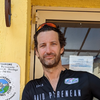Riding your first sportive abroad
We've done a fair few sportives and granfondos across Europe - and had our fair share of mishaps too. Learn from our mistakes and apply our top travel tips to get your ride abroad right first time.
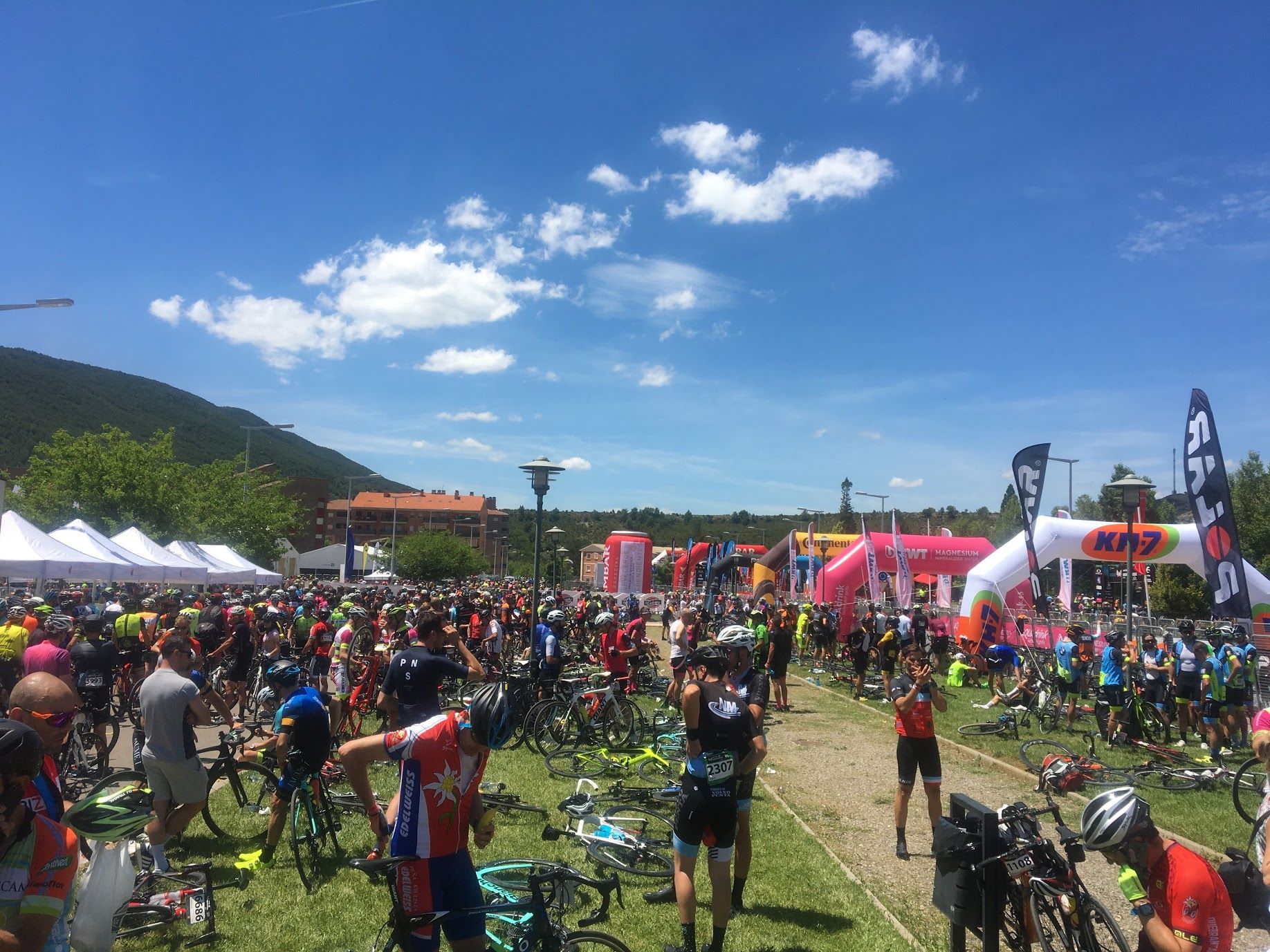
Making memories
Nothing compares to the experience of riding in a big event abroad. Sure, there's some spectacular scenery across the UK, from Dartmoor to the Lake District. There's a plethora of popular and challenging events. Trust us, it's not the same.
Getting married, having kids, buying the house, earning a promotion, that dream holiday – yeah, all great (must get those pictures off the old Macbook). But once in a lifetime events just don't come around every year.
Only they do in the world of very amateur cycling. You just haven't booked one yet. Find a way. Find a way to get away. Let this be the year that becomes that year.
Choosing the right event
Savour the process. It's like leafing through the Christmas toy pages of the Argos Catalogue as a kid.
The spring classics are within driving distance, no bike boxes or airport transfers. Most offer multiple distances and there's the Brucie bonus of getting to watch the pros race the same course the following day. Some events offer a soigneur-friendly location: Gourmet Ghent for the Tour of Flanders? Romantic Rome for the Granfondo Roma?
It may be opportunistic of course. Perhaps you just happen to have booked a family holiday in Vaison la Romaine the week of the Granfondo Mont Ventoux. (13th June this year if you haven't booked the family holiday yet).
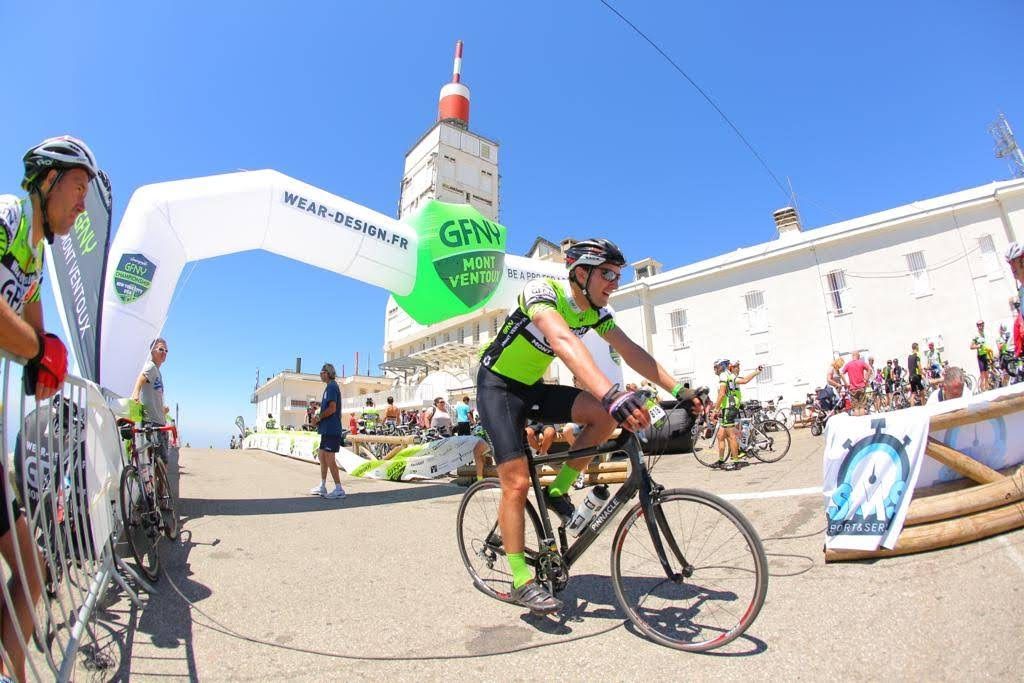
Stuck? Close your eyes. What do you see?
If you see a snaking pass ahead, hear tinkling cowbells and taste rarefied air then you're destined for the mountains, be it the Alps, Pyrenees or Dolomites. If you see someone's mud-spattered backside, hear some chain slap and taste the froth of a beer, the bergs of Belgium are calling you.
You'll know when you see it. Don't kid yourself that you make the choice. That first foreign sportive will choose you – just as a wand chooses its wizard.

Should you book with a tour operator?
Most cycling clubs arrange trips to the big events, which you can join if you're a joiner-inner. For the most part, we've arranged our own trips abroad. It's pretty easy if you're the organising sort. It gives you more flexibility in terms of travel times and hotels, which can = savings. And you have complete control over your itinerary.
Getting an entry ticket is straightforward in most cases. The events are so big, they accommodate all-comers. Most of the spring classics come in around £15, while the flagship summer events are nearer £65. Some insist you wear the official jersey and bundle that in the entry price. Medals are usually an optional extra.
There are notable exceptions which operate a ballot: L'Etape, the Cape Town Cycle Tour, the Maratona dles Dolomites, and the Marmotte des Alpes. If you want certainty, go with a tour operator who can guarantee entry. Sports Tours International and Sportive Breaks are the two heavyweights. You can't go wrong with either.
They bundle a hotel and airport transfers package, throwing in extras like a pre-ride briefing, having a mechanic on hand, and extra feed stops on the course. For some events they'll arrange overland bike transport, which is a real treat. Nothing that special, but knowing everything's taken care of means you can relax and focus on the riding. A bit like it is for Andy, when he comes away with me.
Cycling insurance
If we were sponsored by a specialist cycling insurance provider, we'd have a glowing recommendation to casually drop here. If insurance were remotely interesting, we'd do an in-depth feature-by-feature comparison of competing offerings. We're not. It's not. But it is advisable nevertheless.
Yellow Jersey deserve a mention because they've got a pretty good blog called The Draft. Other brands include PedalSure and Bikmo. Let's face it, we're not telling you anything now that a Google search couldn't. Shall we talk about your health instead?
Medical certificates and ICE
A lot of foreign events require you to upload a medical certificate to accompany your registration. They may also require you to present a paper copy when you register in person. Getting one can be a proper pain.
The document states the doctor sees no reason why you shouldn't participate in a physically demanding sporting event. Some GPs will take your blood pressure, listen to your heartbeat, look you up and down and happily sign – charging you an arbitrary £50 for the privilege. Due to the (perceived) risk of liability, others are reluctant to do this.
Sports Medical Certificates is a very handy service/racket we've used before. For £65 you're almost certain to get the necessary paperwork, without the hassle/reassurance of having to go for a physical. A digital certificate arrives in less than 24 hours – useful for printing out duplicates.

While we're talking medical details, it's a good idea to wear a dog tag or wrist band with your name, blood group, allergy information and ICE (in case of emergency) phone numbers on it. This particular good idea falls into the "Do as we suggest, not as we actually do" category.
Booking flights/Eurotunnel and a hotel
If you've only ever taken the Eurotunnel during school holidays, be prepared to be very pleasantly surprised. Outside of peak times it's dirt cheap and you'll sail through – well, bore through. The 35-minute trip is just long enough to get a bit of kip in so you're fresh driving on the other side. We were living the dream pre-Brexit. The post-Brexit, Covid-disrupted reality may be more of a nightmare.
Off-peak flights can be equally easy on the pocket. Until you add your bike box to the basket. Some British Airways flights will let you take your bike box as part of a checked luggage allowance. Easyjet and Ryanair charge £30-£50 each way. No airline guarantees your bike will be on the same flight as you, so choosing one that runs multiple flights daily to the same destination offers something of an insurance policy. Book an earlier flight to benefit.
Hotels go fast. The earlier you book, the more options. The last thing you want is a long ride to the start pre-dawn. Or that same long ride at the finish. Picture yourself wheeling a bike through reception and into a lift. Practicality for the win. Check if the hotel has secure bike storage. Do they offer an extra-early breakfast the day of your event? If you're driving do they have secure parking?
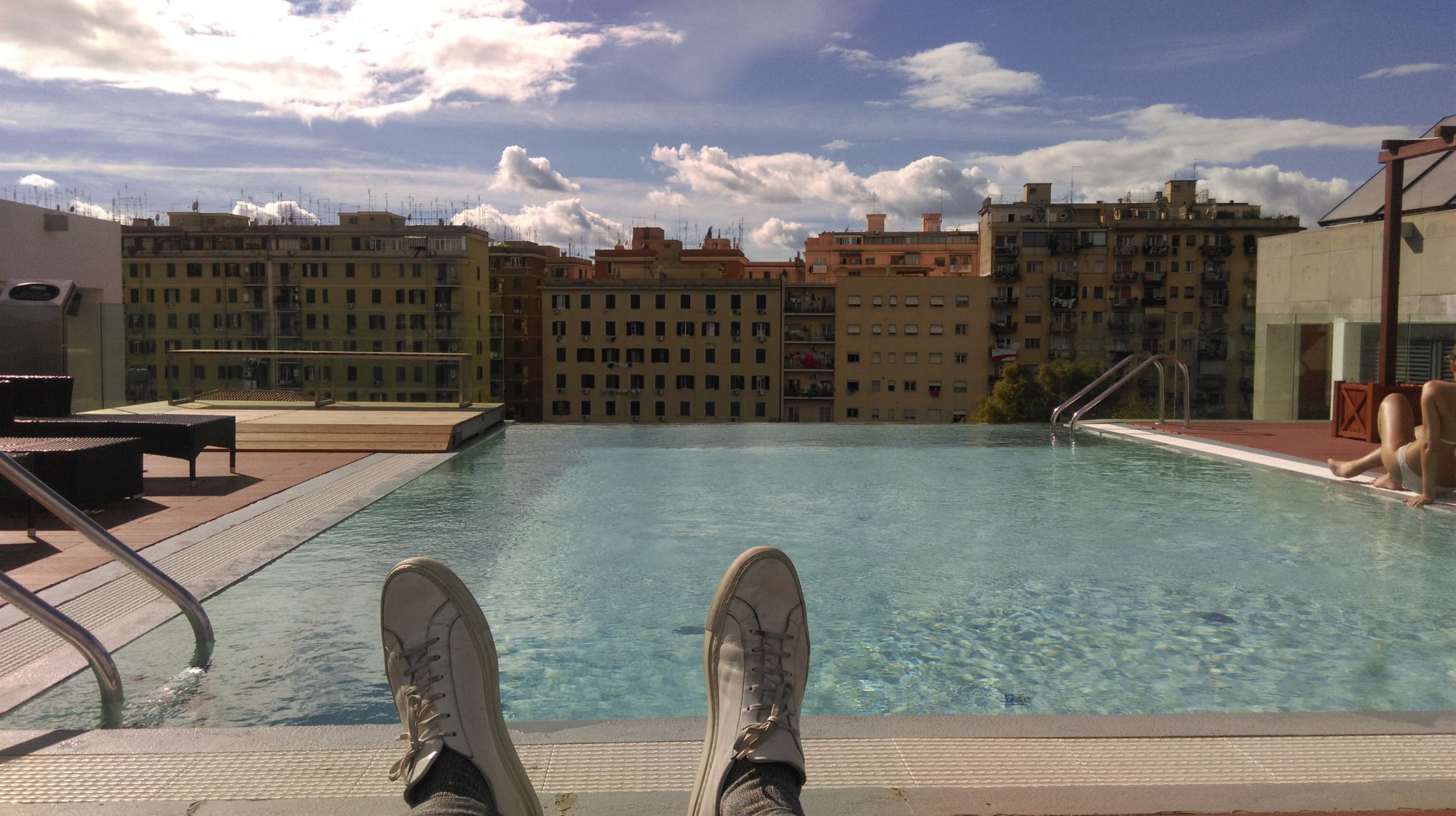
How to train and prepare
Train the same way you would for any other big event. Ideally, get as close to the type of riding you're going to do abroad as possible. Riding long alpine climbs is mostly about stamina. Nothing can really prepare you riding cobbles, unless you have a friend with a jackhammer you can perch on.
As a rule of thumb, if you've done around 80% of the distance before the big day, you'll be OK. Adrenalin, plenty of food and a bit of drafting will see you through the unknown 20%.
Get used to doing the time, as well as going the distance. Anything that's sore after three hours is going to be excruciating after seven or eight. For this reason, it's not wise to make any changes to your bike set up in the days or weeks before an event.
Give your bike a once-over before you go. A full service would be ideal, but at the very least check your tyres, brake blocks/pads and chainring for wear and your chain for stretch.
Finally, you face the single most difficult decision of your cycling career. To shave your legs, or not? If you've ever been remotely tempted, now is the time to take the plunge. We've always remained resolutely hirsute, but smooth is definitely the done thing abroad.
What to pack
Well, this is going to be an exercise in avoiding the obvious.
Take more than you think you might need, even if that means being depressingly pessimistic about the weather. Forecasts are fallible. All the cold weather gear you've got for the early Spring Classics, and layer upon windproof layer for anything involving a mountain over 2000m – even in mid-July.
Pack some of your go-to snacks and gels. Maybe some sachets of porridge or muesli if you're not sure your hotel will be serving early, or your B&B's just a B without B. Sun screen, ibuprofen, plasters for blistered heels or to cover chafed nipples, chamois cream.
Bike lights are useful if there's long mountain tunnels on the route or a foggy dawn start. Gas canisters aren't permitted on planes, so a mini pump is a good idea. Put a track pump in your bike box, with a pedal wrench to re-tighten your pedals. I always stick my foam roller in the bike box too. Put your helmet, cycling shoes and pedals in your hand luggage. If your bike fails to arrive, you can at least try to hire one.
Transporting your bike
If you're lucky, you'll have a friend with a bike box, who's not such a good friend they're coming with you, but sufficiently friendly to lend you theirs.
Otherwise you're renting, unless you're willing to part with £450. Go hard, not soft. You can count on a Bike Box Alan (other brands are available) although if you've become accustomed to ceramic bearings, you may find the casters mildly upsetting.

Do not leave it until the night or morning of travel to start dismantling your bike. Seatposts can seize and removing pedals can be a hernia-inducing exercise (especially if you turn the wrench the wrong way). They say you never forget your first time. It's worth taking precautions too. Get some bubblewrap, a removal blanket or pipe cladding for extra frame protection. Best remove your disc brake rotors to avoid bending them out of shape. Use tape to mark your saddle height before you remove it. Some of the older boxes are designed for quick release spindles rather than modern thru-axles – check early.
Remember, you've got to get this over-sized Trunki to and from the airport. You won't win any friends on the train at rush hour and anything smaller than a VW Golf may struggle to accommodate it. No economy hire car options for you.
Allow a little more time at the airport to drop it at the oversize luggage area, once you're checked in. This is unlikely to be situated anywhere obvious and rarely staffed. It's a bit like dropping your firstborn off on their first day of nursery. Wave the bike through the gates, turn around and don't look back. It'll be just fine.
The day before the event
First things first, get your bike assembled and lay your kit out. If there's anything you've forgotten, you'll likely be able to pick it up when you collect your entry pack. It's worth doing this the day before the event. The queues can be long. Remember some ID and that Doctor's certificate.
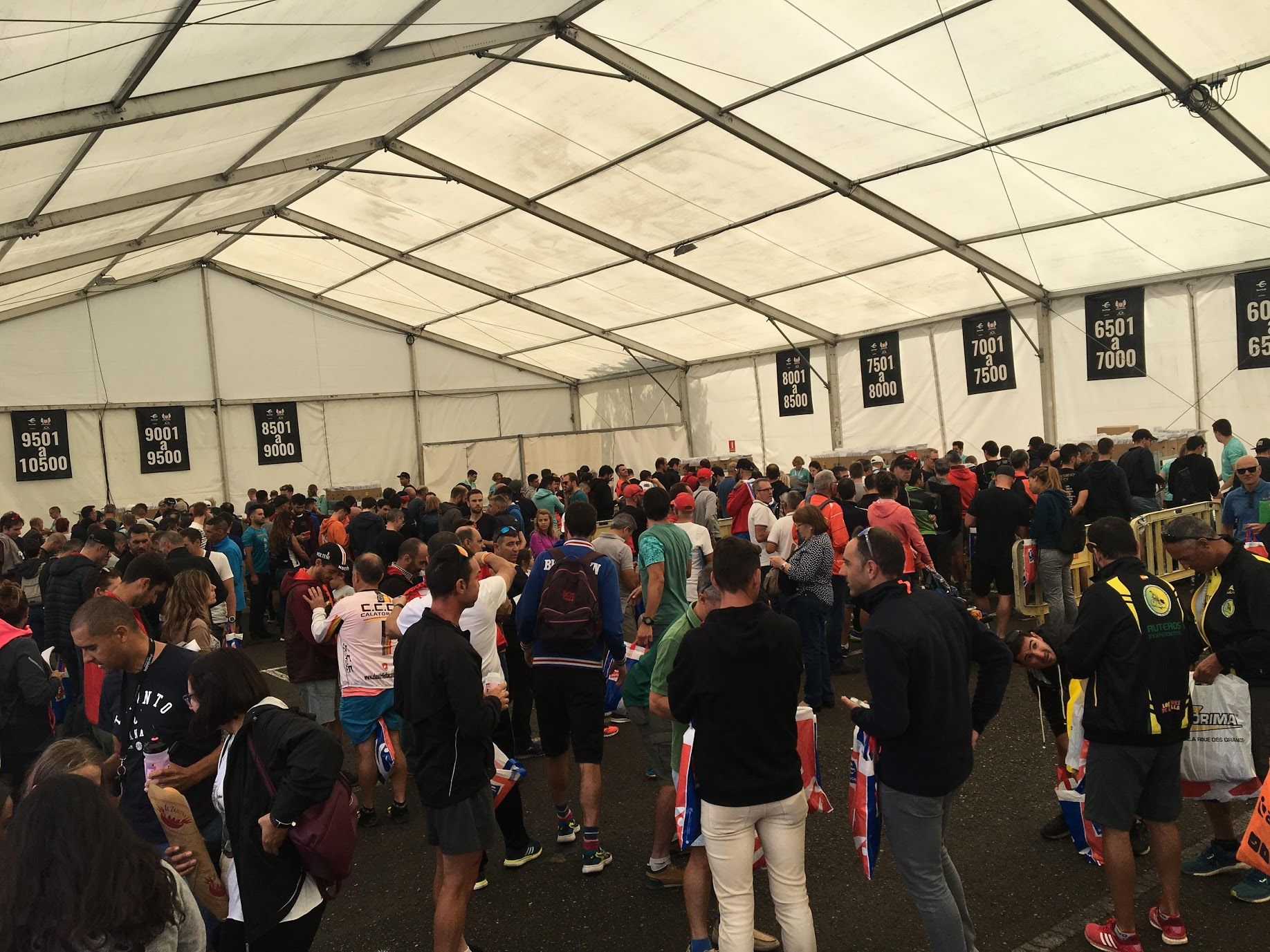
A ride to the race village is a good opportunity to check your bike is running smooth and silent. Even better if you have the time to fit in a gentle prologue. Spinning up the Gavia Pass the day before the Stelvio Santini was one of the best days I've had on a bike.
Vikings went to Valhalla, native Americans to Xanadu. Cyclists get to go to race villages. Every cycling accessory you might possibly need, classic jerseys, dope socks, daft gadgets, draft beers, sizzling sausages and pumping euro house music. After your abstemious three-month training regime, now's the time to let go and live a little.
A little, but not a lot. Eat sensibly, drink moderately. It's hard enough getting a good night's sleep knowing the alarm is set, without indigestion or a hangover. The one hour time difference means you could be rising much earlier than you're used to. While away the evening getting stuff out the way. Pin your bib number on your jersey and fill the pockets, stick the sticker on your top tube, the timing chip on your helmet, inflate your tyres, make gigantic filled baguettes, that sort of thing.

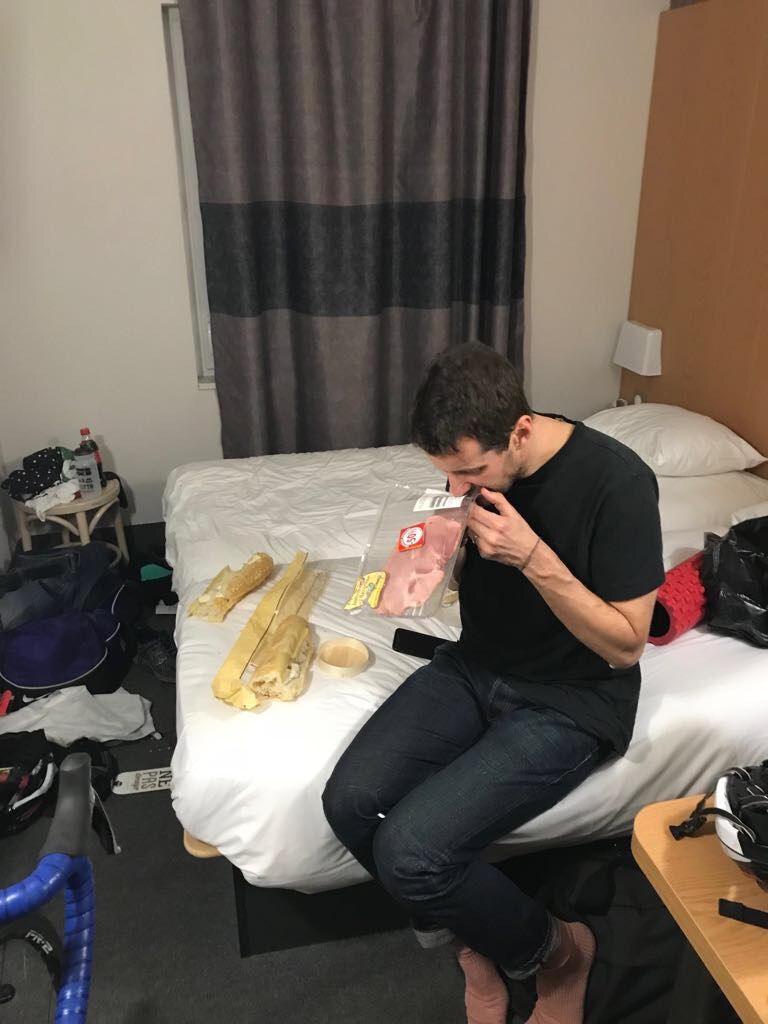
Morning of the ride
Lie there just a moment and enjoy the anticipation. This is the day.
Putting your bestest kit on feels extra-special, but maybe go down for breakfast before changing into the bib shorts. Nobody wants to see that while they're eating. It's tempting to go overboard on the smorgasbord, but grease belongs on your bike, not in your stomach. Rather than over-eating, grab an extra bread roll, a slice of salami or cheese and a banana or two for the road.
If you're lucky, or regular, you'll get to "go" before you leave the hotel. Finding a toilet in the outside world can be a challenge. Using one you do find can be traumatic.
Most of the spring classics have a rolling start, which is anti-climactic, but convenient. The big summer events have a fixed start time and you'll have an allotted starting pen to be held in. It can be chilly waiting for the off – a frisson of excitement can easily become shivers of deep discomfort – so layer up. Remember, queueing is a very British custom, not everyone is as into it as we are, or even aware of it. Don't get aggro.
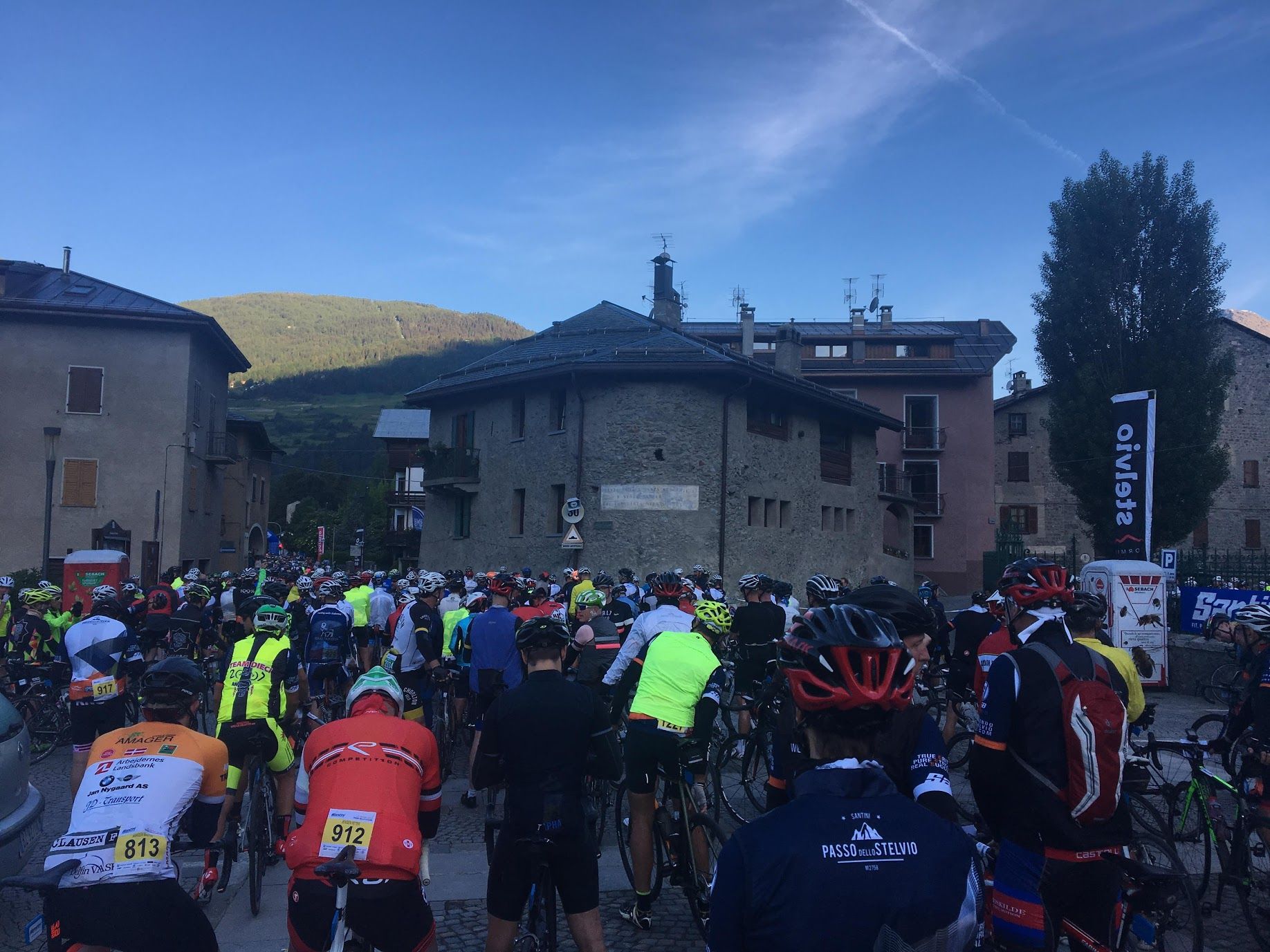
Try as you might, it's hard not to be intimidated by your fellow starters. Even at your lightest, there's a good chance you'll feel lardy among these lean specimens. Forget the bikes on display, I'd never experienced calf-envy until I cycled abroad. Your tasteful, muted colours will feel decidedly dull next to the acres of gaudy neon lycra. But just look on the even brighter side, it's all forgotten once you're off.
Race strategy
Decide on the pace you're aiming for and try and stick to it. The starts can be breathtakingly fast. Like, Zwift race fast.
This means deciding if you're competing or completing. We've tried and enjoyed both. Setting a target time and gunning it round can be so so satisfying, but it's easy to overreach. Get in with a swift group on the flat and it's impossible not to try to hold on, even if the bars on your metaphorical battery are visibly draining. But how good is it to feel like a pro, just that once?
Bypassing the feed stations in pursuit of a fast time is a false economy. We did this on the Ronde Picarde and massively regretted it later. Conversely, one of our most memorable moments was stopping at a roadside coffee kiosk in the Appian hills on the Granfondo Roma for an unscheduled espresso.
In some events, like the Marmotte Alpes and Stelvio Santini there are neutralised sections – usually to deter racing downhill. Take advantage of the stopped clock to feed, stretch and snap some photos.
The finish and the race village
There have been rides where we've blown through the last 20km, propelled by a second wind. Other times it's been more gutsy than gusty, and we've limped over the finish line. It can be emotional. That foreign dust has a habit of finding its way into tired eyes.
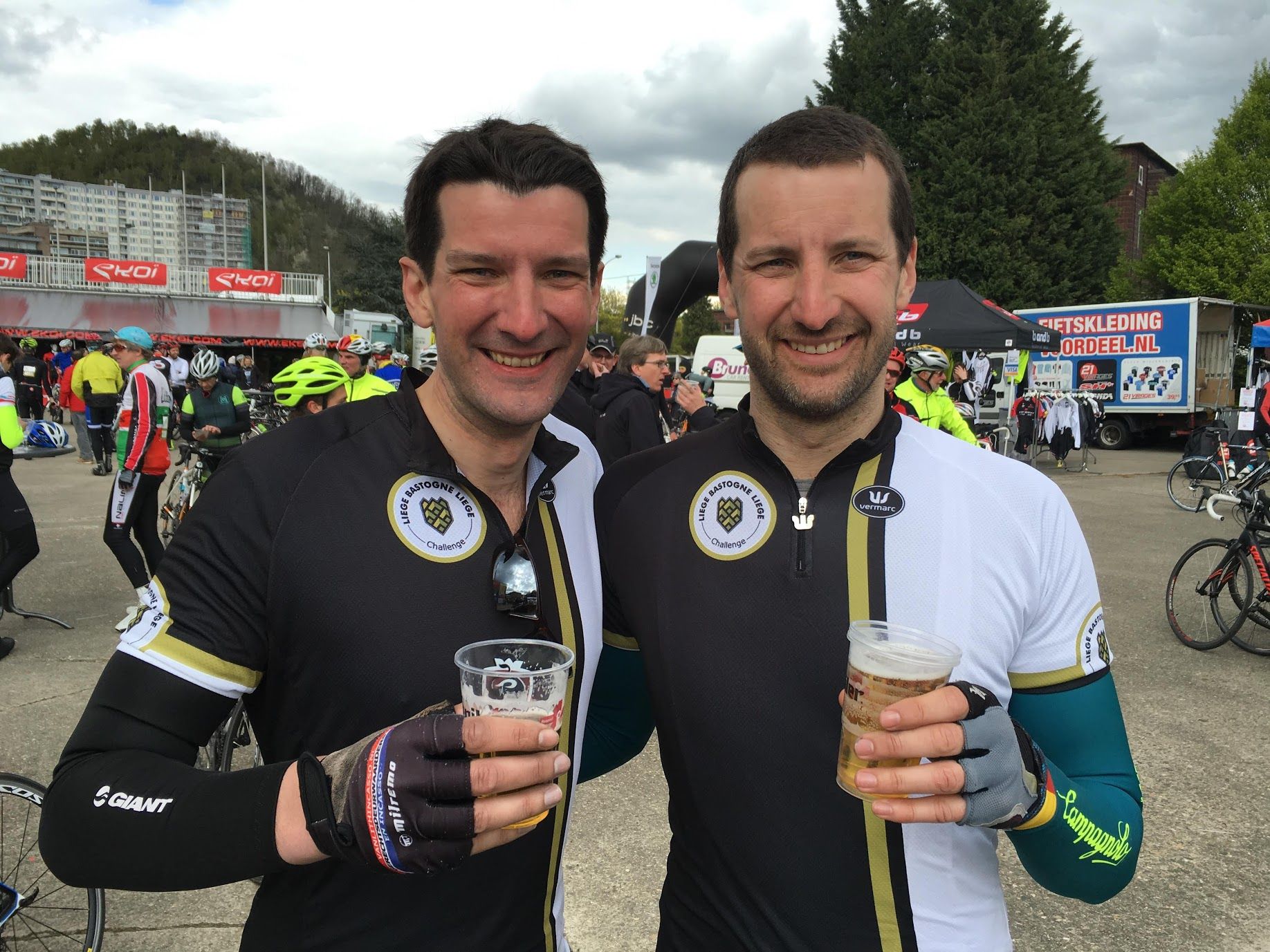
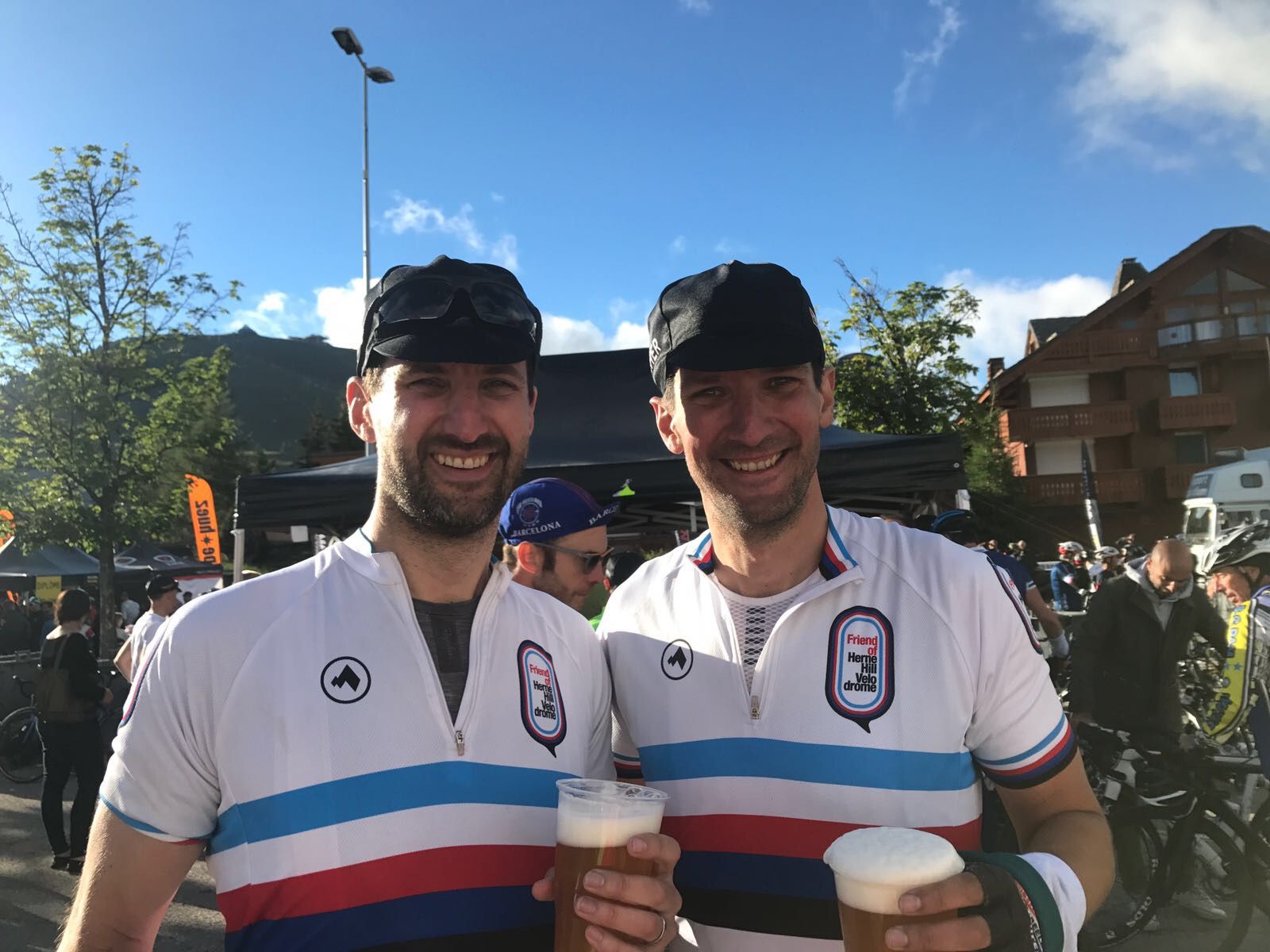
Getting a beer in is the obvious thing to do. The need to feed may be equally. pressing. Avoid crushing disappointment by carrying cash – not all the stalls take cards. If your finisher's medal wasn't freely hung around your neck on the line, go present your proof of purchase. Then get yourse lf warm and dry. There's no prizes handed out for hypothermia.
You may be thinking "never again". That will pass. A smug sense of satisfaction sets in soon enough and lasts long after the aches have eased. Besides, you don't have to do it all again. Not when there's so many other events to choose from.

